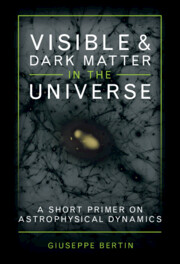Book contents
- Frontmatter
- Dedication
- Contents
- Preface
- Acknowledgements
- Part I Visible Matter
- 1 Light
- 2 Optical Astronomy
- 3 Radio Astronomy
- 4 X-Ray and Gamma Ray Astronomy
- 5 Astroparticle Physics, Gravitational Waves, and Space Physics
- Part II Dark Matter
- 6 Galaxies
- 7 The Supermassive Black Hole at the Center of the Milky Way
- 8 Two Precursors of the Problem of Dark Matter
- 9 The Discovery of Dark Halos around Spiral Galaxies
- 10 The Cosmological Context
- Index
1 - Light
Published online by Cambridge University Press: 08 December 2022
- Frontmatter
- Dedication
- Contents
- Preface
- Acknowledgements
- Part I Visible Matter
- 1 Light
- 2 Optical Astronomy
- 3 Radio Astronomy
- 4 X-Ray and Gamma Ray Astronomy
- 5 Astroparticle Physics, Gravitational Waves, and Space Physics
- Part II Dark Matter
- 6 Galaxies
- 7 The Supermassive Black Hole at the Center of the Milky Way
- 8 Two Precursors of the Problem of Dark Matter
- 9 The Discovery of Dark Halos around Spiral Galaxies
- 10 The Cosmological Context
- Index
Summary
Electromagnetic radiation is the primary source of astronomical information.
In particular, until the early 1930s astronomy was all based on the use of telescopes
that extended the power of the human eye, but were restricted to the
collection of visible light. In general, the sources of astronomical electromagnetic radiation and other sources of astronomical information are what we call visible matter. This chapter introduces some key concepts and notation that characterize light and the collection of light for astronomical purposes. It addresses the main types of information that we may extract from the observations, by means of imaging and spectroscopy, recalling the difference between apparent and intrinsic properties of the astronomical sources and the fact that the light from distant sources is often a mixture of photons from different stars or different
components. This serves as an excuse for a quick introduction to important
concepts, such as stellar populations, mass-to-light ratios, mean motions, and
velocity dispersions. In closing the chapter, a method is described to measure the distance to a stellar system based on the application of a very simple dynamical model to a suitable set of observations.
Keywords
- Type
- Chapter
- Information
- Visible and Dark Matter in the UniverseA Short Primer on Astrophysical Dynamics, pp. 3 - 21Publisher: Cambridge University PressPrint publication year: 2022

